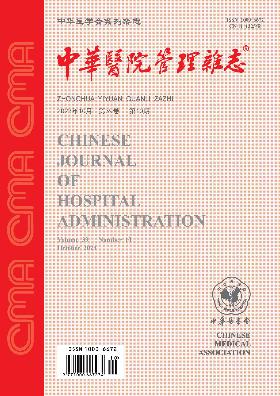Application research on the sequence advance and retreat method in hospital performance appraisal system
引用次数: 0
Abstract
In hospital performance evaluation, significant differences in the work objects, work content and economic operation of various departments result in the lack of indicators comparability between different departments. This has become a prominent problem that hospitals have been unable to effectively solve for a long time, and has also affected the fairness of performance distribution to a certain extent. Starting from the dilemma of cost-benefit evaluation, the authors put forward the basic concepts of the sequence advance and retreat method, and comprehensively elaborated the implementation steps and operating points of the performance assessment using the sequence advance and retreat method. It is pointed out that the sequence advance and retreat method has four characteristics: weakening the differences between departments by vertical and horizontal combination, avoiding the deviation of guidance by scientific comparison, highlighting the incentive effect by grade differentiation, and reflecting the advantages and disadvantages by end adjustment. The value of this method in the hospital performance appraisal system is discussed from three aspects: promoting the de-profitization process of hospitals, achieving fair distribution of hospital performance, and strengthening the guidance of hospital performance management. Based on such studies, this article provides new methods and ideas for building a more scientific and fair performance evaluation system. Key words: Evaluation indicators; Performance appraisal; Performance management; Hospital management序列进退法在医院绩效考核体系中的应用研究
在医院绩效评估中,各部门的工作对象、工作内容和经济运行存在显著差异,导致不同部门之间缺乏指标可比性。这已成为医院长期无法有效解决的突出问题,也在一定程度上影响了绩效分配的公平性。从成本效益评估的困境出发,提出了序列进退法的基本概念,并全面阐述了运用序列进退方法进行绩效评估的实施步骤和操作要点。指出,序列进退法具有四个特点:通过纵向和横向组合弱化部门之间的差异,通过科学比较避免指导的偏差,通过等级区分突出激励效果,通过末端调整体现优势和劣势。从促进医院去盈利进程、实现医院绩效公平分配、加强对医院绩效管理的指导三个方面论述了该方法在医院绩效考核体系中的价值。基于这些研究,本文为构建更加科学、公正的绩效评价体系提供了新的方法和思路。关键词:评价指标;绩效考核;绩效管理;医院管理
本文章由计算机程序翻译,如有差异,请以英文原文为准。
求助全文
约1分钟内获得全文
求助全文

 求助内容:
求助内容: 应助结果提醒方式:
应助结果提醒方式:


